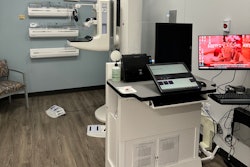Researchers have developed a virtual tool for women undergoing breast cancer screening to interact with their mammography results, according to a study published January 5 in the Journal of the American College of Radiology.
The researchers, led by Seetharam Chadalavada, MD, from the University of Cincinnati in Ohio noted that their tool provides an interactive platform and education suite for women seeking information on their breast cancer screening reports.
“We created a prototype with an interactive patient report that included interactive images, results, next steps, and individual risk level for breast cancer,” Chadalavada and colleagues wrote.
Previous research suggests that gaps in patient knowledge of mammography persist. A 2020 study found that less than half of interviewed women with dense breasts were aware they had this finding, with the vast majority reporting they did not understand this is an independent risk factor for breast cancer.
Chadalavada and co-authors developed the tool using a human-centered design framework, aiming to make patient-centered improvements in their institution’s screening mammography program. The multidisciplinary team consisted of breast imagers, non-breast imaging radiologists, and design students who interviewed patients via online surveys to gather information regarding mammography reporting. They focused on pain points from the patient perspective and conducted site observations.
From there, the team took the critiques and values of the patients and translated them into the tool, called MyChart Mobile. It identified four main opportunities for improving the breast cancer screening process: availability for personal consultation with a breast radiologist, creating an interactive patient report, a way for patients to track the mammography process, and revisions to letters sent to patients following screening mammography.
With these in mind, MyChart Mobile was implemented to provide an interactive patient imaging report and education suite that included the information regarding next steps, personal result history, personalized risk level for breast cancer, interactive images, and a breast density chart.
“Additionally, a process tracker was added to MyChart Mobile to function analogous to a shipping tracker and provide real-time updates when images were reviewed, finalized, and expected to be available to the patient,” the researchers wrote.
The authors also revised language from mammography reports to make reports easier to read for patients.
Additionally, the process showed that the team’s breast imaging department offered just one of the four main opportunities, personal consultation with a physician.
“While it was therefore not a focus during prototyping, our research highlighted a gap between our actual and perceived services offered and will serve as a roadmap for future improvement,” Chadalavada and colleagues wrote.
They added that they believe the prototype tool will take patient feedback into account for future iterations and that more general insights will influence the tool’s expansion into other areas of patient care.
The full report can be found here.



















